Tuning your banjo affects every aspect of how your tone comes out of the instrument. But, what is the banjo tuning for a 4-string, 5-string, and 6-string banjo? What are your options, and how are they different from one another? In this article, you’ll learn everything you need to know to get the most out of your favorite and preferred string instrument.
What Is the Standard Banjo Tuning?
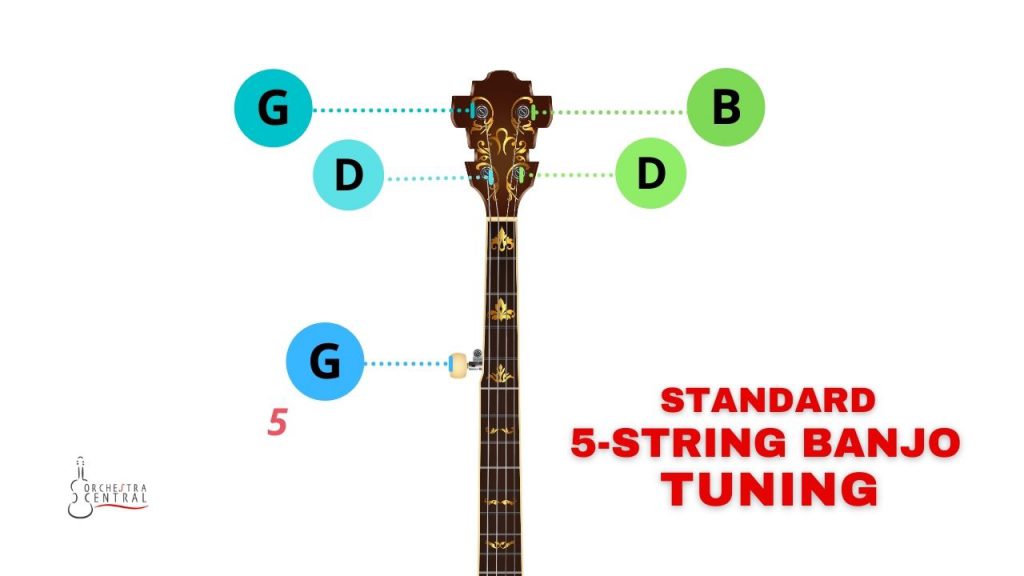
Before we dive into the banjo’s different tunings, you have to know what its standard tuning is. For a four-string banjo, the standard tuning is C-G-D-A. If you have a 5-string banjo, its standard tuning is set to G-D-G-B-D. On the other hand, a 6-string banjo follows a guitar’s tuning E-A-D-G-B-E.
4 String Banjo Tuning Types
1. Standard Tenor Tuning
C-G-D-A
It is the most common 4-string tuning because it works well with either the rhythm or melody section of a song. And if you are working with flat-loving instruments like a saxophone, you’ll be happy to know that a standard tenor tuning works well.
Fun fact: If this tuning looks familiar to you, you’re not wrong – it is precisely like a viola!
2. Adapted Jazz Tuning
D-A-E-B
Adapted jazz tuning is set to D-A-E-B, which is also used in Irish folk. So, why should you have your four-string banjo in this tuning? Well, its high B means you don’t have a hard time reaching the note, which is particularly useful for banjo players with small hands.
However, there are two downsides – there is a risk of snapping the banjo strings, and you’ll sacrifice some low notes. If you don’t like this tuning’s disadvantages, you can always set your banjo to the standard tuning and put a capo on the second fret.
3. Chicago Tuning
D-G-B-E
If you play the guitar or a baritone ukulele, you’re already familiar with the Chicago tuning. In fact, you don’t have to learn new fingerings. You can produce a series of eighth notes or several triplets at once without interference from adjacent strings because your index finger strums only string instead of two.
However, there is a downside to this tuning. It’s not the best for melody playing because you’ll have to quickly reach the neck, which can be troublesome due to the gap (octave and a step) between its highest and lowest strings. But if your playing style is more inclined to strumming, you can’t go wrong with the Chicago tuning.
4. Plectrum Tuning
C-G-B-D
Plectrum tuning is not only limited to plectrum banjo. Many tenor banjo players use the C-G-B-D plectrum tuning because of the shorter reach. And just like Chicago tuning, the plectrum is best for strumming.
5. Irish Tenor Tuning
G-D-A-E
This banjo tuning mirrors the fiddle instrument. In terms of sound, you’ll often hear muddy or hollow because of the low tuning. Some players fiddle around with the tension to somewhat fix or resolve this issue.
Fun fact: G-D-A-E is similar to a violin or mandolin’s tuning. The only difference is that the Irish tenor tuning is one octave lower.
5-String Banjo Tuning Types
1. G Modal
G-D-G-C-D
G modal is similar to the standard 5-string tuning (G, D, G, B, D). The difference is you’re swapping B with C. You’ll often hear this tuning in old songs like the Shady Grove.
2. E Tuning
E-B-E-G#-B
If you know Open G tuning in a 5-string banjo, switching to E tuning is fairly straightforward. All you need to do is make the strings three steps lower in terms of pitch.
3. Double C
G-C-G-C-D
As its name suggests, this tuning has two Cs. Many old-time songs used this tuning because it gave the instrument a lower sound. It also adds a layer of drone tone due to the presence of two Cs.
4. C Tuning or Drop C
G-C-G-B-D
This variation of double C tuning lowers the pitch by one whole step, which is better suited for playing old-time music. It’s also called “C Tuning” or “Drop C.” This gives it a deeper, more resonant tone than an E chord. D-tuning combines the same pitches as C tuning but with a lower octave starting on D rather than C.
5. D Tuning
F#-D-F#-A-D
One perfect example of this 5-string tuning is Earl Scruggs’ Reuben. And fun fact, if you swap the fifth string (F#) with A, you will still get a D chord without fretting the strings.
6. Open G
G-D-G-B-D
As its name suggests, you will have open G, which means you don’t have to fret the notes to get a G chord.
6-String Banjo Tuning
E-A-D-G-B-E
6 String Banjo Tuning is also called “American Standard Tuning” because its notes are the same as those of the guitar’s standard tuning. This common tuning is used for playing all genres of music on the banjo.
Table of Contents


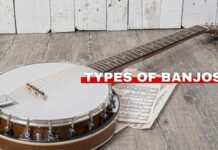
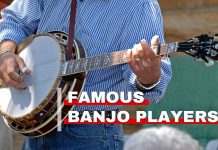
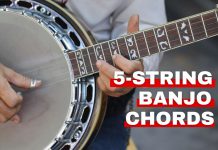

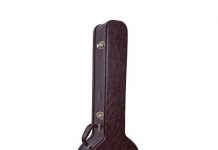
Hello Orchestra Central
This is a really good article about Banjos and I really appreciate it.
There are so many different banjo types and tuning variations it is a very confusing subject.
Also confusing is, how to know which Octave the strings are tuned to. Just stating the Note A-B-C -E- For G is not sufficient as it is only part of the required information Telling me a string is tuned to say G does not tell me what octave it lives in.
This is crucial information firstly to get in tune but also so as not to be braking strings. So could you consider updating your article by adding the Octave number next to the notes. For example the note G3 etc. Doing that purveys a lot more information.
I will find this enormously helpful.
Thank you greatly. Brian Plummer July 2023